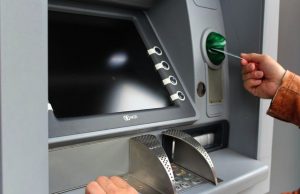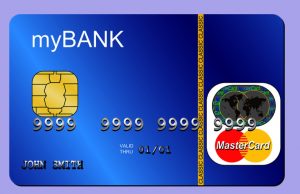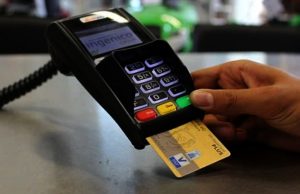Advantages And Disadvantages of E-banking: Electronic banking, often known as electronic fund transfer (EFT), replaces cheques and other paper transactions with computer and electronic technology. EFTs are made possible by devices such as cards or codes that let you or anyone authorize access to your account. For this purpose, several financial institutions utilize ATM or debit cards as well as Personal Identification Numbers (PINs).
Other forms of debit cards, which need your signature or a scan, are used by some. Some, for example, employ radio frequency identification (RFID) or other “contactless” technology to scan your data without coming into physical contact with you. Some electronic consumer transactions are covered by the federal Electronic Fund Transfer Act (EFT Act). The banking industry is evolving as a result of globalization, competition, and innovation, as well as client requirements.
As information and communication technology (ICT) progressed, banking services saw substantial changes in recent years as a result of the establishment of a knowledge-based economy and society. In recent years, the banking industry has evolved tremendously. What used to happen solely in stores may now happen anywhere in the globe at any time and through whatever delivery channel a customer prefers (ATMs, telephones, personal computers).
As a result, the traditional banking network, which consists of physical branch infrastructure, is increasingly threatened by information technologies, which are represented by automated forms of client interaction (ATMs, call centers, online banking, mobile banking), which have lower costs and give customers a variety of delivery channels to choose from.
Recommended: Advantages and Disadvantages of shopping online
Various E-Banking Services
1. ATMs: ATMs are automated teller machines that allow you to bank at any time. Generally, you insert an ATM card and enter your PIN to withdraw cash, make deposits, or move funds between accounts. Some financial institutions and ATM operators impose a fee, especially if you don’t have an account with them or if your transactions occur at a distant location.

Generally, before you complete a transaction, ATMs must display a fee and the amount charged on or near the terminal screen. For further information on these costs, check with your financial institution and ATMs you use.
2. Internet Banking: Customers have access to a banking facility that allows them to conduct a variety of monetary and non-monetary transactions via the internet, using the bank’s website or application. The Internet banking system and technique in which a network service provider connects a personal computer directly to a bank’s host computer system so that customer service requests may be performed automatically without the need for human interaction.

The system can tell the difference between customer service inquiries that can be handled automatically and those that need to be handled by a customer care agent. The system is linked to the bank’s host computer system, allowing remote banking customers to use the bank’s other automated services.
Recommended: Countries with the best education system in the world
3. Mobile Banking: Almost all banks have developed mobile applications that allow you to conduct transactions at the touch of a button. A smartphone, internet, mobile application, and mobile banking service activated in your bank account are all necessary.

It is the newest service in electronic banking, allowing bank clients to execute various financial activities using a mobile device. Mobile banking relies on WAP (Wireless Application Protocol) technology since a mobile device must have a WAP browser loaded to give access to information. E-banking may enable banks to offer new goods and services, extend their conventional customers, and strengthen their competitive position in the payment services industry.
4. Debit card: In our day-to-day lives, debit cards are used to complete a specific number of transactions. Debit cards are connected to a customer’s bank account, so all they have to do is swipe the card to make a purchase at a POS, buy online, or withdraw money from an ATM. The money is taken immediately from the customer’s account in this manner.

5. Credit Card: A credit card, like a debit card, is a payment card that banks offer to consumers based on their credit score and history. It allows the cardholder to borrow money and make payments up to a pre-determined amount.

The card’s issuers set the limit. For the usage of a credit card, the cardholder agrees to return the amount within a certain length of time, plus certain fees.
Also see: How to become a successful lawyer
6. Electronic checks: At a store or when a business receives your check in the mail, electronic check conversion transforms a paper check into an electronic payment. When you present your check to a cashier at a store, it is processed via an electronic system that saves both your banking information and the amount of the check.
You sign and save a copy of the receipt for your records. When the merchant returns your check to you, it should be labeled or invalidated so that it cannot be used again. The monies are sent to the merchant’s account when the information from the check is electronically submitted to your bank or other financial institution.
When you mail a check to a merchant or another firm for payment, the information from your check may be electronically sent to the system, and money is moved from your account to theirs.
Recommended: Advantages and Disadvantages learning online
Benefits/Advantages Of Electronic/Internet Banking

1. Convenience: Finding time to go to the bank for various operations such as account balances, interest rates, successful money transfers, and other updates has become increasingly difficult due to increasingly demanding and chaotic schedules.
For users’ convenience, the banking system has put up a virtual banking system that allows them to access their accounts at any time and from any location. It addresses the problems users had with the old banking system. For any type of money withdrawal or transfer, there is no need to stand in line.
2. Liquidity: The major benefit of using internet banking is that you may transfer money and use it at any time. You don’t need to go to the bank to transfer money; you may do it from any place without going to the bank.
Also see: Best online shopping sites in the United States of America
3. Transactions are completed faster: You don’t have to wait for your turn to transfer cash; all it takes is a single touch of your finger or a single mouse click. In a matter of seconds, funds from one account will be moved to another. E-banking may be used for anything that necessitates speedy payments.
For example, you are obligated to pay your child’s school tuition right away. You may do it using your bank’s app or website, or by physically visiting the bank to withdraw cash and then depositing the fees at the school.
4. Simple to Use: Customers may connect to their online accounts with ease by just entering in their login credentials. Furthermore, clients may manage many accounts at the same time. Because the internet is still the primary mode of communication, consumers may use a single device to access several accounts at many banks.
5. Less significant limitations: Traditional banks are constrained by factors such as operation hours, branch location, and so forth. With internet banking, you don’t have to wonder if it’s a holiday or what time it is to make a transaction.
You can accomplish anything (and more) using their app or website, whether it’s Sunday or the middle of the night because it’s open 24 hours a day, 365 days a year.
Recommended: Advantages and Disadvantages of social media to students
6. Simple to use: Customers may log in to their online accounts quickly and easily by just entering in their login credentials. Furthermore, clients have the ability to manage many accounts at once. Because the internet is still the primary means of communication, customers may use a single device to access any bank accounts.
Recommended: How to Become a Better Programmer: 10 Essential Tips
7. Availability: E-banking is available at all times and the user customer can always carry out his tasks any place and any time (other than going to the bank) once the internet connection is active.

He can use the e-banking system even during public holidays, night hours, and weekends (those periods in which banks are not on duty). This service availability and accessibility is as long as the internet remains actively connected (which may be up to a month straight or more).
Also see: Differences Between Pharmacy and Pharmacology
8. Easy Management of Accounts: An e-banking account (whether current or fixed deposit) is not difficult to open and manage by the user customer and he makes his choices on how he wants the account to operate and how much he invests into it without any form of interruption. It is possible to manage many accounts easily with the use of e-banking. Based on its simple and easy mode of operation, the user customer can easily make request for his bank products such as: bank cards, credit and debit cards, and cheque Books all for his account even without visiting the bank.

Through e-banking, the users activate automatic payment settings for their expenses ( rather than going to the bank for cash payments) and easily take advantage of other services provided in it such as: purchase of insurance policies, different loans applications, mutual funds trading, and with this e-service provision, customers can comfortably oversee and manage all the transactions or operations as regards to their accounts (even with the use of the e-banking applications on smartphones). Today, all these have added to the need and quality for an e-banking system to the bank customers and has shown that such system is easy and safe to manage.
Recommended: How To Overcome Fear Of Driving (Driving Phobia)
9. Easy Documentation, Balance checking and Tracking of Accounts: Another advantage of e-banking is that the user enjoys automatic documentation in that he does not need to keep hard copy receipts of all his transactions such as: transfer or bill reciepts, as they have been documented automatically in his electronic device (an example is smartphone through SMS notification) and can be viewed at any time.

With the e-banking platform, the user can also keep an eye on the balance of his account in any place after each transaction and on regular basis so as to discover and prevent any fraudulent attempt or act that tampers with his account before it poses any damage of loss.
He can track his account regularly with the use of e-banking system because the old transactions are still fresh in his device (unlike the hard copy which may not contain clear statement of account any more). The system also provides a platform whereby users can download old statements of their accounts.
Recommended: Most important uses of a computer
Disadvantages Of Electronic/Online/Internet Banking

1. Issues about security: Because the platform has various flaws and information may be obtained by hackers, digital banking is inherently insecure. As a result, users may incur financial losses. It is also possible to steal financial information, resulting in a loss of cash.

While most banks have a good reputation and are well-established, there are situations when you may encounter security concerns. Actual and/or potential identity theft is always a possibility. It’s also possible to get illegal access to your account if your log-in credentials are stolen or compromised. A direct connection between the customer and the institution is inadequate.
Online banking demands effective customer service in order to manage consumer issues. Customers, on the other hand, are dissatisfied when they receive poor customer service. Certain online payments may not be reflected in the system due to technical issues. It also makes customers feel uneasy. As a result, the absence of customer service is a deterrent to online banking.
2. Difficulty with transactions: During online banking, users may encounter difficulties such as transferred payments not being reflected, payments failing, and other technical support concerns.
3. Accessing e-banking takes a long process: In certain countries, government banks provide online banking through the completion of an internet banking form, after which you may obtain a security password to log in.
An individual must first download the appropriate banking app, after which all necessary credentials must be entered in order to properly log in.
Recommended: How to become a better singer fast
4. Development and training: Banks must perform personnel training and development programs in order to provide high-quality online services that improve the consumer experience. Training them to provide excellent services necessitates a significant financial commitment.
5. Problems with Technology: If you don’t have a good internet connection, or if there are problems in the software, or if there is a power outage, or if the servers go down, websites will crash, and you will definitely confront a slew of technical troubles.
While you may receive numerous sorts of customer service at the time, you may become disappointed sooner or later. In a genuine bank, though, someone is constantly there to assist you.
6. Beginners will find it challenging: Getting the hang of e-banking might be tough for newcomers. Customers are generally hesitant to explore all of the options and features provided on the website or app because they are afraid of losing money. If timely support is not offered, new customers generally give up and return to traditional banking.
Recommended: Highest paying programming languages to learn in 2022
7. No Deposition of Cash: In e-banking services, there is no platform for cash deposits. This implies that the e-banking users cannot deposit cash through that platform rather they must go to their respective bank branches or cash deposit machine centers (whether they need instant services or not).

8. Internet failure and fraud: If the bank’s internet or server fails to connect, the E-banking user cannot use the banking software for any purpose and if it connect slowly, the usage will also be slow (and may not give the user what he want at the moment). In the case of slow conection, the user may not know whether his transactions were successful or not. This is because his e-banking services can be interrupted by failure or instability in internet connection.
E-banking users who fails to follow the bank security measures for e-banking (this failure may be caused by negligence or ignorance) experience internet fraud. He may negligently: insert a weak password which is traceable by internet hackers, give out his passwords, or remain connected online to his bank account without knowing it. All these can give room to internet fraud which is disadvantageous to the e-banking user.
Recommended: Most Complex Movies of All Time
Conclusion
Client happiness and service performance are critical factors in ensuring customer acquisition, retention, and profitability for banks. Banks may now serve and help consumers not only in branches, but also anywhere in the globe, at any time, and through any delivery channel, a customer chooses.
Customers are visiting branches less frequently as a result of the ease of digital channels, and they are relying more on online and mobile technologies for their banking requirements. Online and mobile banking are quickly expanding in importance, whereas branch banking is gradually declining. When it comes to seeking banking advice, though, people still prefer branch banking.
Despite the fact that the internet and mobile phones do not totally replace traditional channels, they have recently become the most popular way for customers to engage with their banks. As a result, there is little doubt that electronic banking will unquestionably overtake traditional banking in the not-too-distant future.

Edeh Samuel Chukwuemeka, ACMC, is a lawyer and a certified mediator/conciliator in Nigeria. He is also a developer with knowledge in various programming languages. Samuel is determined to leverage his skills in technology, SEO, and legal practice to revolutionize the legal profession worldwide by creating web and mobile applications that simplify legal research. Sam is also passionate about educating and providing valuable information to people.
